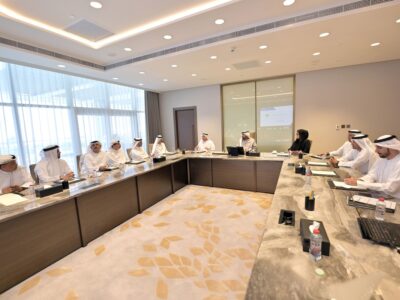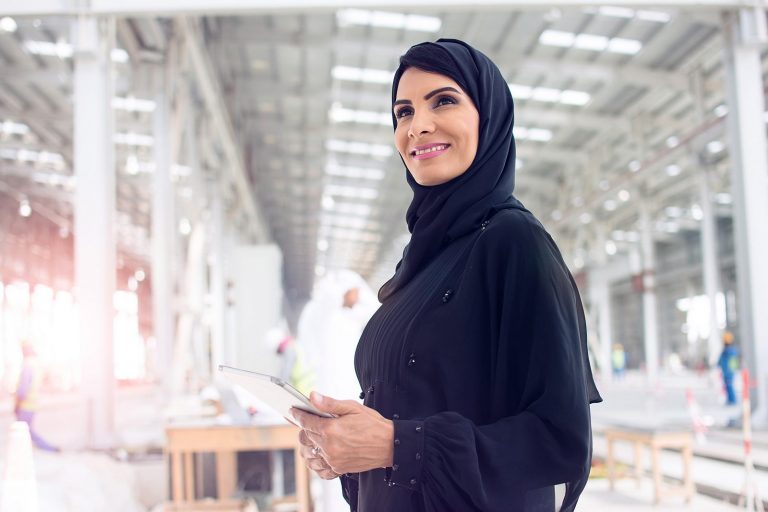Despite huge strides being made in the MENA region to instill gender parity across the business world, bias still exists, particularly for female founders.
According to Dr Wassim Dbouk, founding member of the CIBL for Women, associate professor of Finance, and founding member and lead in Empirical Finance, further integration of women into business could provide a serious boost to the GDP of countries in the region.
In an exclusive interview with Arabian Business, Dr Dbouk discusses the challenges, barriers and potential solutions associated with narrowing the region’s gender gap.
What are the barriers facing female founders and women-led businesses who are looking to access funding?
Women-owned start-ups and women-led businesses face numerous challenges and obstacles, particularly in the MENA region. Among these difficulties are political instability, a lack of expertise across the team, and slow bureaucratic registration processes.
The main challenge they face, however, is limited access to capital and funding, which is a key contributor to the growth and prosperity of such businesses. Women also face structural challenges stemming from financial and workplace policies that are rampant with gender-based discrimination and biases.
How does this region compare to other parts of the world in that respect?
Our own indices reveal that progress in terms of women’s recruitment, retention, and promotion is being made in some sectors including health and education, but the gender gap is still huge.
This is a loss not only for local economies, but also societies and communities – women can play a transformational role in the MENA region. According to recent IFC and World Economic Forum on the MENA statistics, women have made progress in the MENA region, in terms of education and in the field of start-ups.

Most importantly, if women were further integrated in the economy, the GDP of the MENA region as a whole can increase by up to 30-40 percent. Such figures demonstrate that there are tremendous financial opportunities for investors who look at investments through a gender lens.
What is the split of male/female start-up founders currently and what is the representation of women in decision making roles across the region?
Similar gender biases at the workplace exist globally. For instance, a recent Harvard Business Review article reveals the existence of gender bias in access to funding whereby women had a meager 2.3 percent access to venture capital funding in 2020.
Similarly, public data about women’s representation in organisations at the managerial level is scarce. At the Centre for Inclusive Business and Leadership (CIBL) for women, we recently released the results of our Knowledge is Power (KIP) and Lived Experiences (LE) indices, in March 2021. The results of this first MENA sector-based measure of employer policies and barriers to women economic participation showed that women’s presence in firms at the executive level could range as low as 14 percent in Yemen and Jordan, to 37 percent in Iraq.
At the board level, the results show that the representation could be as low as 4 percent in KSA, but go up to 62 percent in countries like Morocco. The latter results are due to a strong female representation at the highest level in small and medium size firms.
Why do you think these barriers exist?
In a recent survey, HSBC reports that one third of female entrepreneurs reported gender bias when trying to raise capital, as most investors tend to be males. Some women, for example, noted that investors enquired mostly about their personal lives rather than their business models.
However, many factors contribute to the gender gap in access to capital. When it comes to running a business, one important factor to consider is that women tend to be more risk averse than men. Hence, they are less likely to seek external investor funding.

In addition, investors tend to overlook the great vision of women-led start-ups same as they would for a male-led one, because most women have less confidence in their ideas and abilities. On the other hand, many financial institutions tend to overlook the potential of women entrepreneurs because they lack significant collateral or past bank records.
What can be done to tackle this issue and as the Centre for Inclusive Business and Leadership what plans have you put in motion to start addressing these issues?
The centre has recently launched the SAWI Gender Lens Investing (GLI) initiative, which aims to work with employers to direct investments based on assessing and rectifying any barriers in the process or structure that lead to the exclusion/exploitation of women in representation, recruitment, retention, and promotion (RRP), reporting, and supply chain.
The initiative, which is part of our SAWI (Support and Accelerate Women’s Inclusion) project and supported by a grant from the Middle East Partnership Program (MEPI), began with a social media campaign to increase knowledge and raise awareness on the GLI concept in the region as well as to highlight its impact on our region.
Starting in the new year, a free mini-certification program will be offered, and will include three modules on; Why Invest in Women in the MENA; Strategies for improving GLI practices in the MENA region; and a live panel discussion with regional GLI trailblazers.
We also intend to showcase companies and investors in the region that are performing well in terms of structure, as well as making a difference and empowering women through investments.








